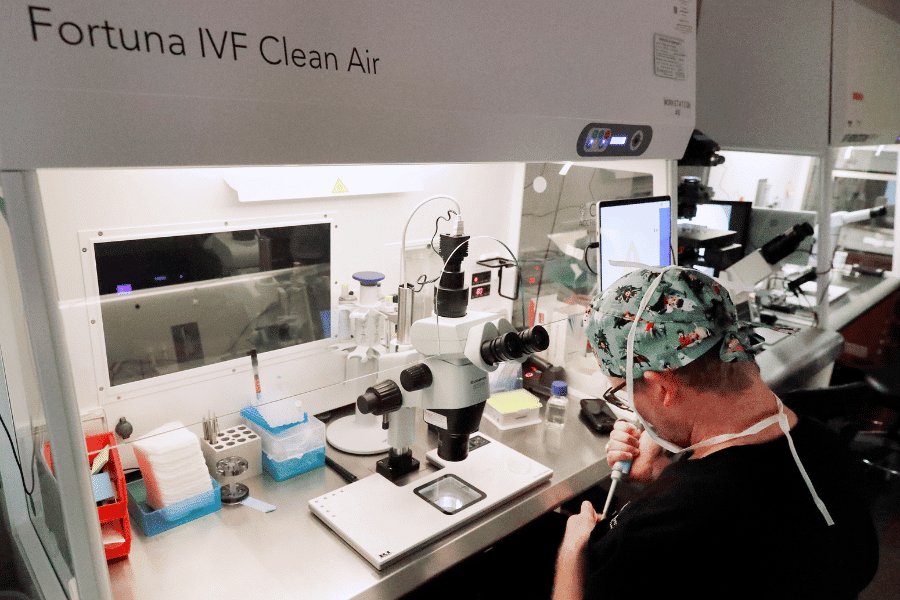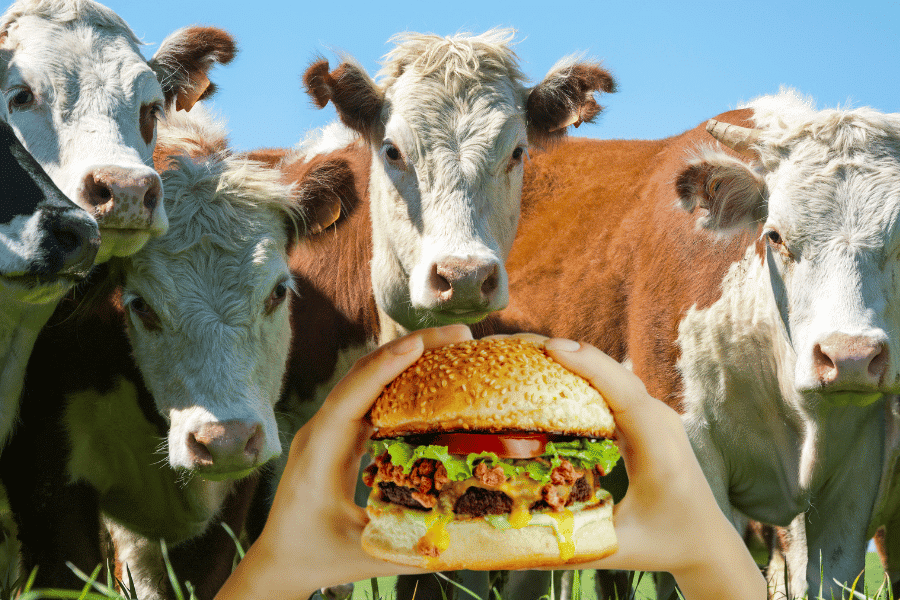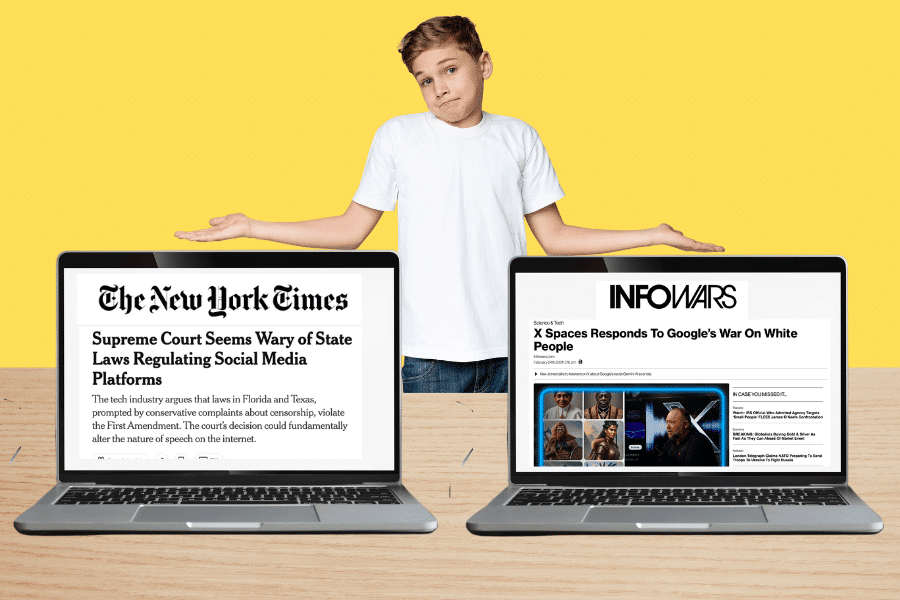
by Viktorie Velhartická | 15 Mar 2024 | Education, Health and Wellness, Realgymnasium Rämibühl Zürich, Student Posts, Youth Voices
One student compared two schools in different countries and found that where the focus was on academics over community, students were more satisfied. What’s that all about? Students discuss amongst each other in a classroom. (Credit: FatCamera/Getty Images)...

by Haley Davis | 14 Mar 2024 | Health and Wellness, Indiana University, Science, Student Posts, Technology, Youth Voices
It can spot cancer, answer medical questions and help develop drugs. But we don’t trust artificial intelligence to be our primary doctor just yet. A masked robot next to an MRI machine. (Photo illustration by News Decoder) You’re lying in a hospital bed about to enter...

by Maya Agarwal | 13 Mar 2024 | Decoder Replay, Personal Reflections, Religion, School Year Abroad, Science
Everyone has an origin story. For one woman, that story begins with the love between a husband and wife. And a petri dish. Lab staff prepare small petri dishes, each holding several 1-7-day-old embryos, at the Aspire Houston Fertility Institute in vitro fertilization...

by Liv Egli | 12 Mar 2024 | Contest winners, Culture, Realgymnasium Rämibühl Zürich, Student Posts, Youth Voices
Psychologists call it cognitive dissonance when you disconnect beef from the killing of a cow. But some think you need to know the animal you eat. Cows look on as someone is about to eat a fat, juicy hamburger. (Photo illustration by News Decoder) This article, by...

by Joshua Glazer | 11 Mar 2024 | Culture, History, Judaism, Religion, School Year Abroad, Student Posts, United States, Youth Voices
Like their parents before them, thousands of U.S. teens head to camp this summer. But for many, this R&R combines relaxation with religion. Two generations of kids at Jewish summer camp. Joshua Glazer, shown right, and his mother, when she was about the same age....

by Kaja Andrić | 8 Mar 2024 | Education, Environment, European School Brussels, Journalism, Media Literacy
Amina McCauley experienced climate change in the ancient forests of Tasmania. Now she wants students around the globe to understand its effects. Amina McCauley sits among the fern trees in Wellington Park, Tasmania. (Photo courtesy Amina McCauley) Concern about...

by Ashley Perl | 7 Mar 2024 | Culture, Educators' Catalog, Europe, History, University of Toronto Journalism Fellows, Women
There isn’t much of a gender gap in Iceland, except in its maritime industry. But go back in time, and you’ll find women pulling in nets and steering the helm. A painting of Foreman Thurídur by Marian McConnell. Habitually clad in trousers, a rust-coloured...
For the world’s most gender-equal country, Iceland has a maritime industry that is surprisingly gender inequitable. Why and how has the status of Icelandic seafaring women regressed over the years? This piece by Ashley Perl gives an overview. In the article’s accompanying classroom activity, have students try their hand at uncovering the history of traditionally gendered professions in a research assignment well-suited for Women’s History Month.
Exercise: Read the article as a class, and then discuss the factors that have contributed to an increasing gender gap in the fishing and maritime industries in Iceland. Afterwards, have students select a profession that has a large gender imbalance in your country (perhaps teaching, nursing, engineering, etc.). Instruct students to research the history of the profession to see if these gender imbalances were the case historically, too. As part of this assignment, you may consider teaching research skills like assessing source credibility and using databases like Google Scholar.

by Lance Roller II | 5 Mar 2024 | History, United States, University of Toronto Journalism Fellows
Thousands of Black Marines fought in World War II. But they had to fight for the right to do so. Now their nation wants to honor them, if they can be found. Montford Point Marines attend a Congressional Gold Medal Commemorative Ceremony at Marine Barracks Washington...

by Michael Leedom | 29 Feb 2024 | Education, Educators' Catalog, Media Literacy, University of Toronto Journalism Fellows
If a child is old enough to learn to read, it’s time to teach them to be media literate. But how to implement that in schools takes some problem solving skills. A teen shrugs at the difference between two computer screens. One shows an article by the New York...
Today’s students are digital natives, but are they digitally literate? In this Classroom #Decoder, guest writer Michael Leedom of the University of Toronto surveys media literacy curriculums around the globe, finding that media literacy education in Finland may be the world’s most robust.
Exercise: Read the article with your class, then have students try their hand at “lateral reading”. This is defined in the text as “checking the credibility of a claim by consulting other sources. Rather than remaining on a website with questionable information to find answers, known as ‘vertical reading’, students are taught to open a new tab and see if new information conflicts with what more trusted websites offer.” Present students with a web page and have them verify the credibility of that page by practicing lateral reading.

by Emily Ireland | 27 Feb 2024 | Contest winners, Culture, Education, Educators' Catalog, Media Literacy, St. Andrew's, Student Posts, Youth Voices
In more regions around the world people want to keep some books out of the hands of youth. But these are the books that engage kids the most. A heavy chain and lock covers three novels at the heart of book banning controversies. (Illustration by News Decoder) This...
Book bans have historically been linked to authoritarian regimes. In recent years, we’ve seen the rise of book bans in democratic countries, too. This is a disturbing trend, and young people are noticing, too. In this piece from high schooler Emily Ireland of St. Andrew’s Episcopal School in the U.S. state of Mississippi, prompt student thinking on censorship and banning books with an evidence-based reasoning activity.
Exercise: Read the article with your class. Then, launch a class discussion on whether there are book topics that should or shouldn’t be banned in public schools in your country. Be sure to get into the nuances of this complicated topic: if some topics are inappropriate for certain audiences, who should be responsible for restricting access? Should it be governments, parents, schools? How might these parameters change from country to country, depending on context? This activity is well-suited to be a complementary teaching tool on a lesson about civil liberties (e.g. in the United States, the Bill of Rights).










